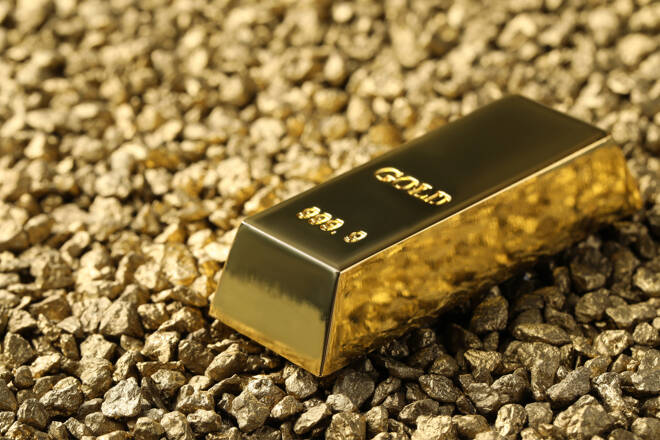Advertisement
Advertisement
Weakening Dollar Boosting Crude Exports, Central Bank Demand for Gold
By:
The greenback is in the early stages of topping out, which could bode well for dollar-denominated commodities such as crude oil, gold and wheat.
While it may be too early to call an end to the broad-based U.S. Dollar rally as the U.S. Federal Reserve is likely to continue hiking interest rates until it corrals nearly runaway inflation, the greenback is in the early stages of topping out, which could bode well for dollar-denominated commodities such as crude oil, gold and wheat.
US Dollar Showing Signs of Topping
There are numerous reasons why the dollar is beginning to show signs of weakness. Firstly, the European Central Bank (ECB) is expected to raise interest rates more aggressively as it plays ‘catch-up’ with the rest of the major central banks in an effort to curb rapidly rising inflation. This is underpinning the Euro.
Secondly, the British Pound appears to be in the early stages of recovery after the U.K. cancelled a highly controversial program to stimulate its economy and appointed a new prime minister. Furthermore, the Bank of England (BOE) is also to supersize its next rate hike on Thursday.
Thirdly, the Japanese Yen is holding steady after a massive intervention by the Bank of Japan (BOJ) last month. Although a divergence in policy between the U.S. Federal Reserve and the BOJ is weighing heavily on the Yen, the divergence and the threat of additional interventions could keep a lid on the U.S. Dollar.
Finally, on Wednesday, the Fed is widely expected to hike its benchmark interest rate by a super-sized 75-basis points. However, policymakers could announce that the central bank will begin slowing the pace of its aggressive rate hikes. This could dampen the appeal of the U.S. Dollar as an investment.
Dollar-denominated commodities should benefit from a weaker dollar.
Crude Oil Exports Soar
With the charts showing the U.S. Dollar may have topped against a basket of major currencies in late September, the crude oil market is already benefitting from the move.
U.S. benchmark WTI crude oil is being underpinned by last week’s Energy Information Administration (EIA) inventories report that showed record U.S. crude exports.
Crude exports rose to 5.1 million barrels a day, the most ever, dropping net U.S. crude imports to their lowest in history.
Analysts took notice of the jump in prices saying, “Across the board this is a dollar-denominated move, and if you try to read outside this, it’s foolish,” said Eli Tesfaye, senior market strategist at RJO futures.
Central Banks Buying Gold at Record Levels
A weakening greenback may have also led to a surge in demand for dollar-denominated bullion last quarter.
Central banks bought a record 399 tonnes of gold worth around $20 billion in the third quarter of 2022, helping to lift global demand for the metal, the World Gold Council (WGC) said on Tuesday.
Demand for gold was also strong from jewelers and buyers of gold bars and coins, the WGC said in its latest quarterly report, but exchange traded funds (ETFs) storing bullion for investors shrank.
Buying by central banks in the third quarter far exceeded the previous quarterly record in data stretching back to 2000 and took their purchases for the year to September to 673 tonnes, more than the total purchases in any full year since 1967, according to the WGC.
For a look at all of today’s economic events, check out our economic calendar.
About the Author
James Hyerczykauthor
James Hyerczyk is a U.S. based seasoned technical analyst and educator with over 40 years of experience in market analysis and trading, specializing in chart patterns and price movement. He is the author of two books on technical analysis and has a background in both futures and stock markets.
Advertisement
